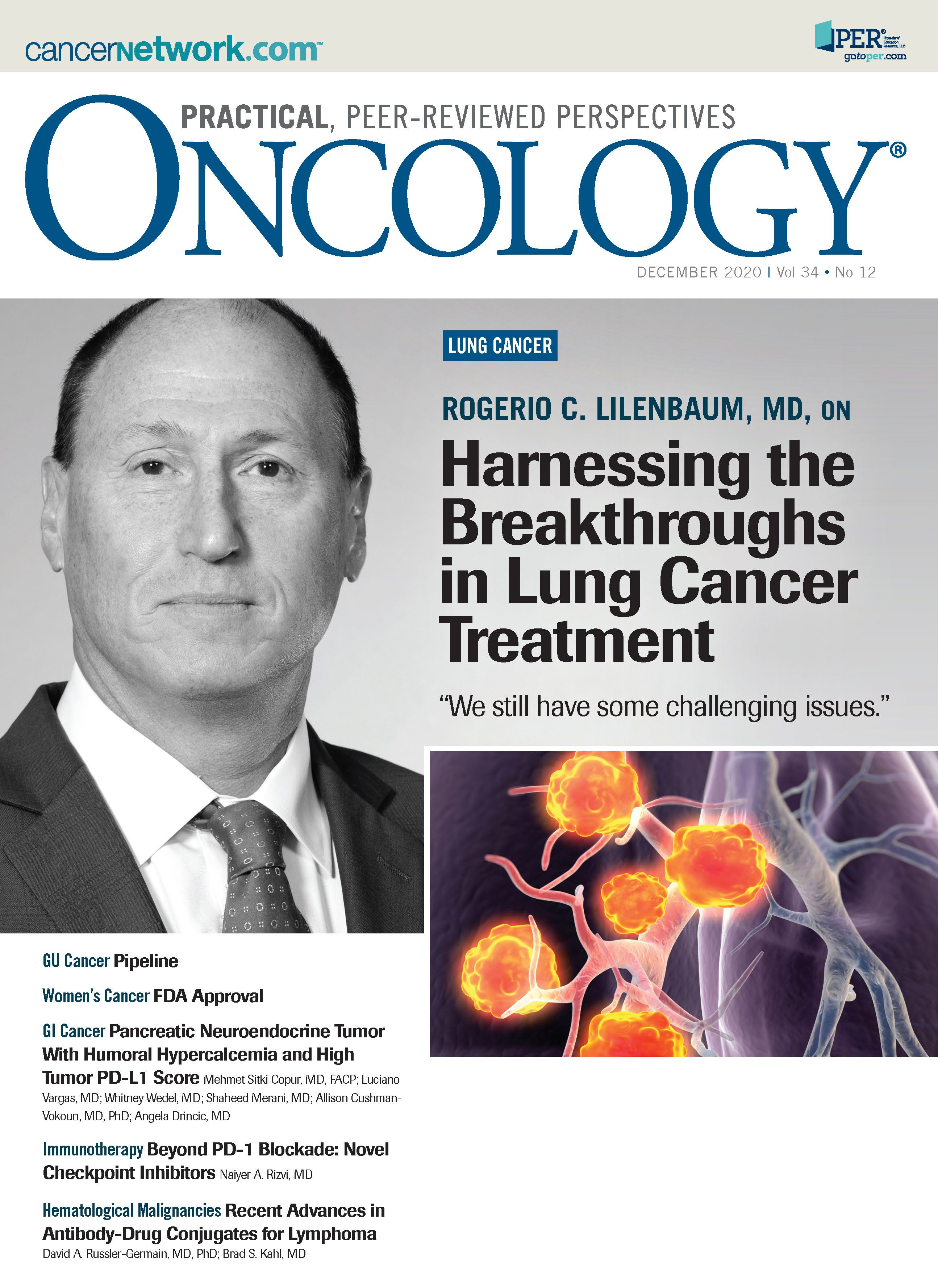Molecular Therapy: Lung Cancer Leads the Way
This month, ONCOLOGY® features an interview with Rogerio C. Lilenbaum, MD, who outlines the evolution in treatment of non–small cell lung cancer (NSCLC), from the era of platinum doublets to highly targeted therapies. Lilenbaum is now director of the Banner MD Anderson Cancer Center in Arizona, and his interview brings to mind memories of when we worked together.
Approximately 8 years ago, I was fortunate to be a faculty member at Yale Cancer Center along with 3 world-class thoracic oncologists, Thomas J. Lynch Jr, MD; Roy S. Herbst, MD, PhD; and Lilenbaum. I have to admit that I was extremely jealous of the treatment landscape
for NSCLC.
Lynch, the cancer center’s director at the time, was responsible for the observation that gefitinib (Iressa), a new drug targeting EGFR, was highly active in a patient who had an EGFR mutation. This conclusion was based on the spectacular clinical response of a young woman who was a nonsmoker, and recent work related to gene sequencing that was being performed at the Broad Institute. The initial report of the efficacy of gefitinib in patients harboring NSCLC tumors with activating EGFR mutations was published in the New England Journal of Medicine.1 This was a great revelation, because gefitinib was not active for 90% of the patients with NSCLC being treated. Oncology as a discipline has never looked back from this paradigm of driver mutations being treated with tyrosine kinase inhibitors.
About the same time, Herbst came to Yale following a successful tenure at MD Anderson, where he had instituted the BATTLE trial to evaluate multiple treatments for NSCLC in the metastatic setting.2 This was further developed to look at targeted agents and evolved into the SWOG LUNG-MAP (NCT03851445) trial, which continues to enroll and develop agents in new strategies for lung cancer.
Recently, we have seen progress with the “undruggable” target of RAS. This gene is a GTPase rather than having adenosine triphosphate as a substrate (which is the case for all the other targeted drugs, going back to imatinib). This unscalable mountain is being whittled away with drugs targeting specific mutations, locking them in the off position. The latest drugs from Amgen (AMG 510) and Mirati (MRTX849) attack the GTPase of the G12C mutation by interacting with the cysteine atom. These have shown a 30% response rate in NSCLC but substantially lower in colon cancer with the same mutation. How this target will contribute to eventual therapy remains to be seen, but they may be the first cracks in the RAS wall of resistance. The promise of effective RAS drugs in pancreatic cancer, which has an 85% mutation rate, is hard to overestimate.
At the time these observations were moving forward in NSCLC, the field of colon cancer was quite far behind in the availability of targeted therapies. Developing a multiarm drug trial was just not possible because of limited numbers of patients with treatable, actionable mutations. Today, we are somewhat more fortunate with understanding of microsatellite unstable tumors, poor-prognosis BRAF-mutated colon cancer and effective triple-drug therapy, HER2 amplification and antibody therapy, and the rare NTRK fusions that are treatable now with targeted agents. Remarkably, we still can prognosticate more effectively on the basis of right-versus-left-sided colon cancer than on molecular profile.
The 2020 holidays are approaching, and it is sometimes hard to grasp that for which we should be thankful, given the disruption to our lives in this year of the coronavirus disease 2019 pandemic. However, I am thankful for the observations of those in lung cancer therapy who made the key observations and developed the important paradigms of the new oncology: next-generation sequencing, understanding driver mutations, and development of inhibitors. We have come a long way, from empiric broad-based chemotherapy drugs to treating tumors with the appropriate targeted agents. I consider the term precision medicine somewhat of an optimistic overstatement, but at least it is a state we can aspire to and work toward.

